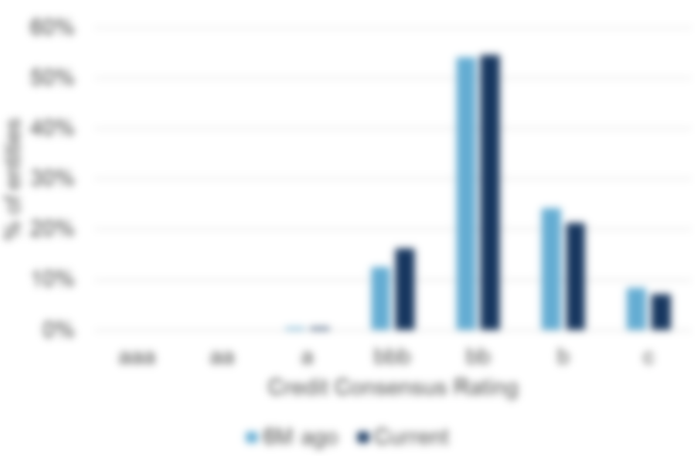
Fed tightening is bad news for all bonds but widening credit spreads add to the pressure for longer dated corporates, with the high yield segment most vulnerable to a default rate spike. Mandated holders are buying short-dated bonds to hedge the impact of expanding credit spreads; discretionary holders are either selling outright or upgrading the credit profile of their portfolios.
As credit markets become more challenging and volatile, consensus credit data[1] provides a stable reference point for assessing underlying portfolio credit risk. The following examples are based on a universe proxy for issuers of bonds tracked by the iBoxx High Yield Index.[2]
Figure 1 shows the issuer credit distribution across all seven categories.[please continue below to access full report].
Figure 1: Issuer Credit Distribution, now and 6 months ago

[1] Sourced from major financial institutions including most of the GSIBs.
[2] iShares iBoxx $ High Yield Corporate Bond ETF as proxy